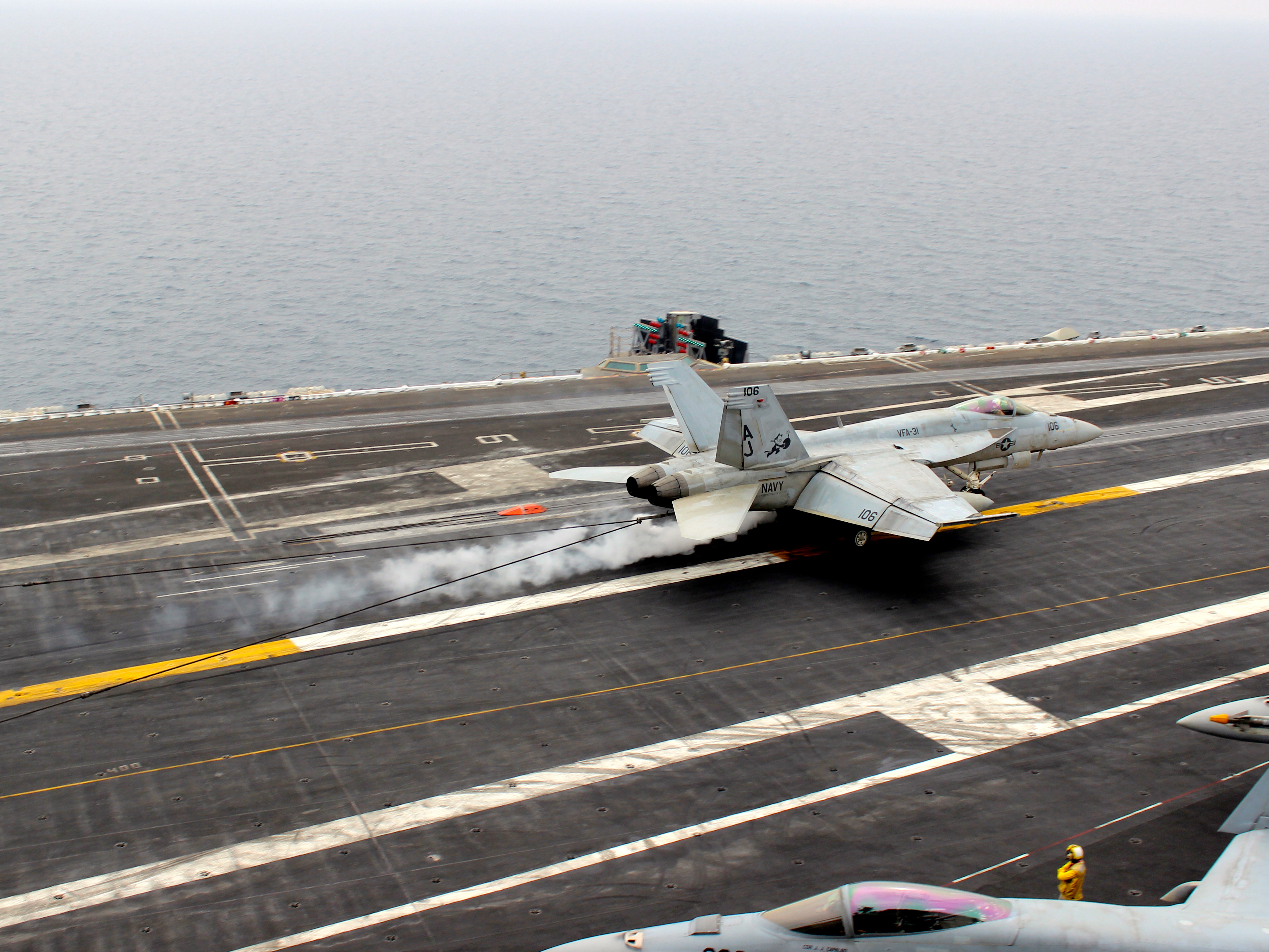A Navy F/A-18 lands on the deck of the USS George H.W. Bush in the Arabian Sea after a mission in support of Operation Inherent Resolve on April 30, 2017. Staff photo by Jennifer Hlad.
The pilots of the USS George H.W. Bush and Carrier Air Wing 8 have been relentlessly dropping weapons on ISIS since reaching the eastern Mediterranean Sea in February, and have so far flown more than 802 naval air sorties, performed 387 naval air strikes, and employed 915 weapons.
The Norfolk, Va.-based ship entered the US Central Command and 5th Fleet area of operations on March 10, and is less than halfway through a scheduled seven-month deployment.
Navy Capt. William Pennington, commanding officer of the Bush, told Air Force Magazine the Air Force supports the carrier’s air wing “every time they go into Iraq or Syria to support the ground effort for [Operation] Inherent Resolve.”
An F/A-18C pilot and operations officer who asked to only be identified by his call sign, Butters, said the pilots work “extensively” with the Air Force—which provides nearly all of their airborne refueling.
“We [also] interact with their strike aircraft in country, in addition to multinational assets,” he said.
The services also share intelligence assets, and there is a standing combined coalition plan to defend ships from the air against threats in the Arabian Gulf, Pennington said.
Lt. Col. Damien Pickart, director of public affairs for US Air Forces Central Command, said Navy air assets are “a crucial part of enabling the coalition to quickly adapt to the dynamic environment in which we operate. … The coalition is stronger because of each service and coalition partner’s unique capabilities that they bring to the fight.”
Since operations commenced against ISIS in August 2014, the Coalition has dropped nearly 80,000 weapons against ISIS in Iraq and Syria. Of that figure, USAF alone has delivered approximately 70 percent of all the weapons. In the last week of April, the Air Force dropped an even larger share, 80 percent, of the nearly 700 weapons delivered against ISIS targets in Iraq and Syria.
The Navy, while flying a smaller share of the total strike effort, offers valuable surge capacity and flexibility to the overall war effort. “One of the neat things about an aircraft carrier is it’s a mobile airport,” said Cmdr. James McCall, commander of Carrier Air Wing 8. “Having an aircraft carrier that can steam through international waters and we can launch combat power off of, I think is a fairly significant option to give our decision makers back in the United States.”
The Bush was the first to conduct air strikes into Iraq at the start of OIR in 2014, McCall said, because of its location at the time and the adaptability the carrier provides.
The Navy “affords more flexibility to the air coalition, offering surge capacity to add aircraft or fly additional sorties in support of Operation Inherent Resolve, and other missions as needed, in the region,” Pickart said.
Still, being at sea comes with its own set of challenges, not least of which is the saltwater, which Petty Officer 2nd Class Richard Ryan noted will corrode the aircraft much more quickly during deployment than it will at home.
Keeping the avionics systems running after the stress of taking off from and landing on the carrier also requires “constant preventative maintenance, watchful eyes, attention to detail,” said Ryan, an aviation electronics technician.
The combined forces air component commander relies on the Navy to provide airpower in the form of strike assets, ISR, and electronic warfare platforms; Tomahawk Land Attack Missiles, launched from Navy surface ships; and ballistic missile defense, provided aboard Navy ships in the region, Pickart noted.
On the days that Navy Super Hornets and Harriers fly, they conduct about 20 percent of the strike sorties among the coalition in support of OIR, he said.
